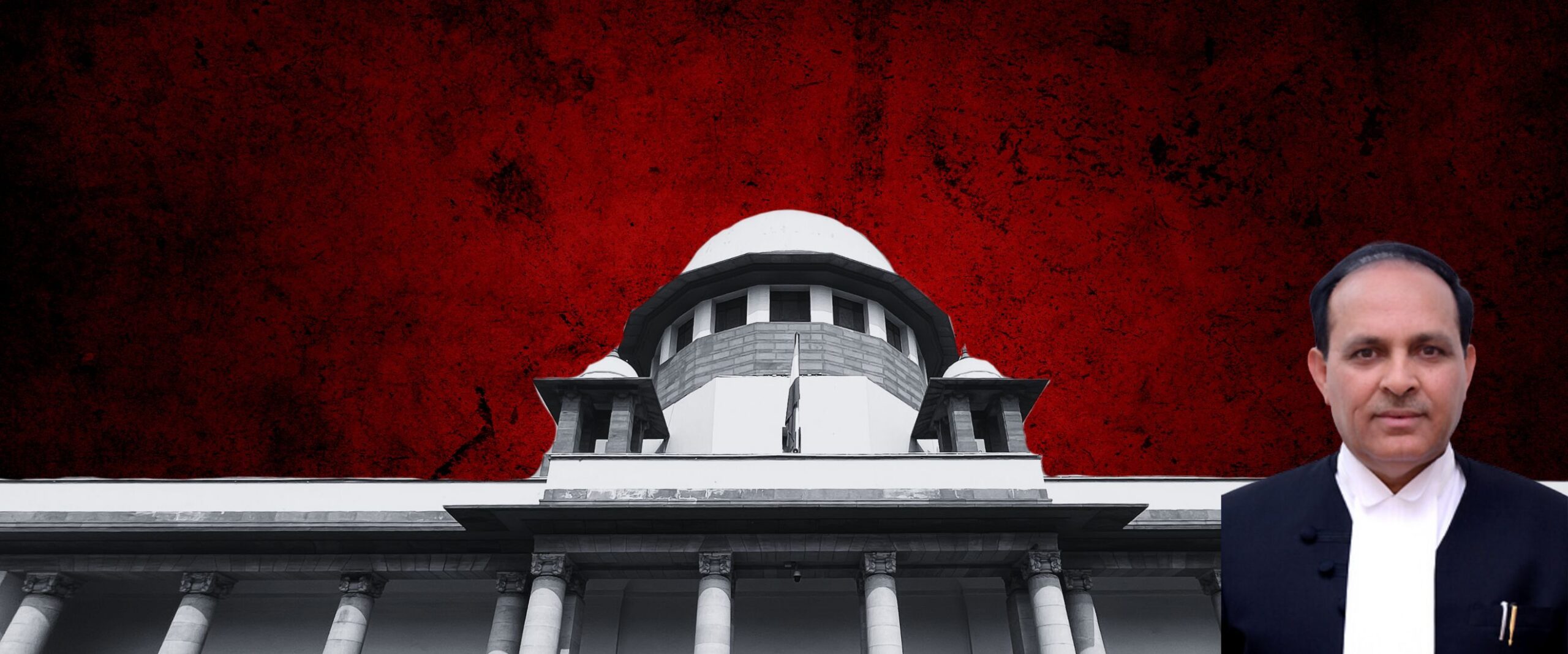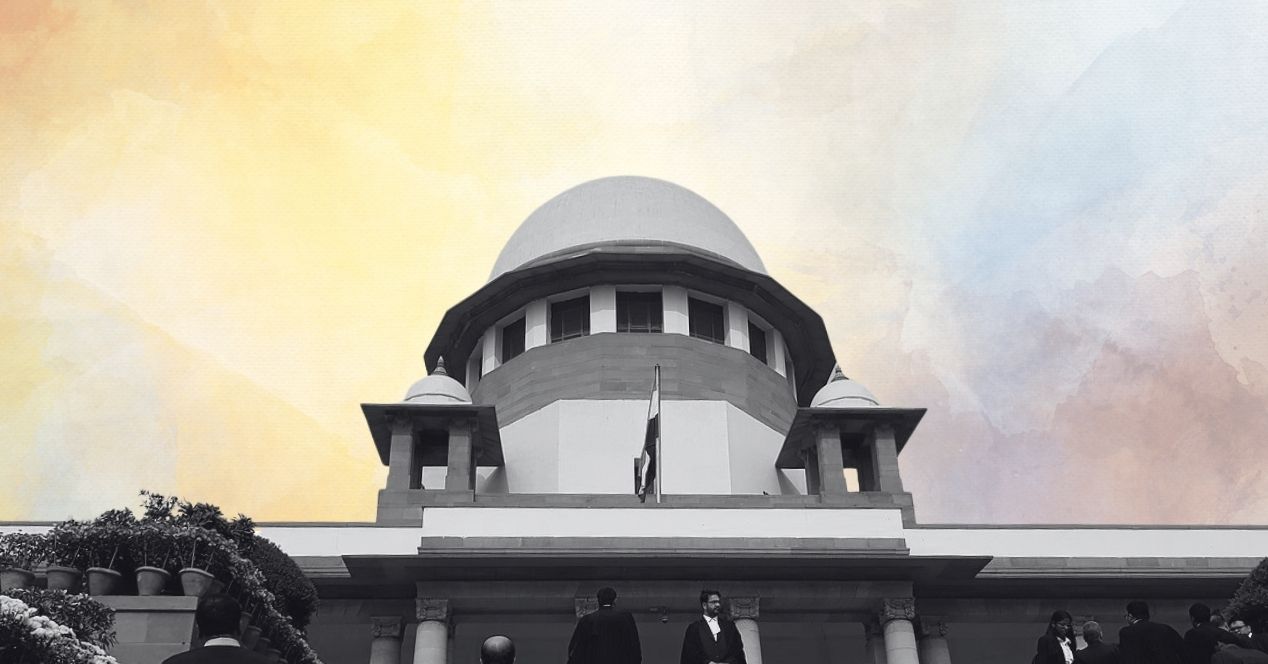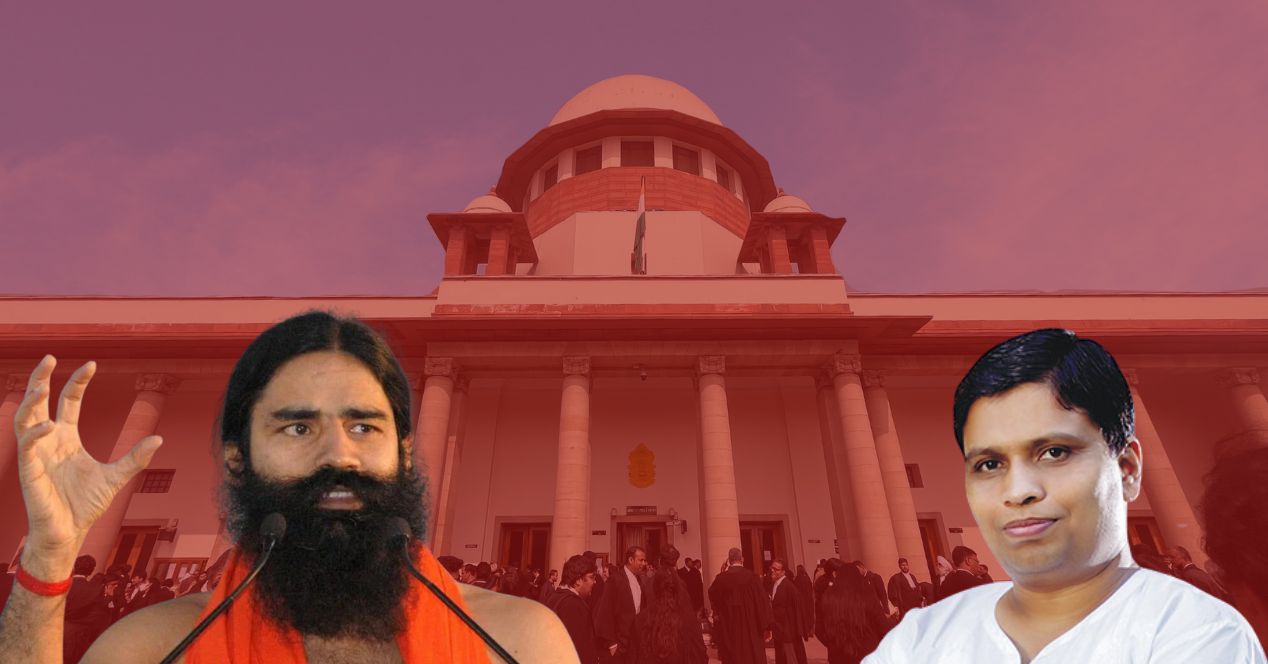Analysis
Supreme Court “pained” by High Court Judge’s “random, gratuitous and unnecessary” remarks
A five-judge special bench expunged the observations made against the top court by Justice Sehrawat of the Punjab and Haryana High Court

In Re: Order of Punjab and Haryana High Court Order of July 17, 2024 and Ancillary Issues
Today, a specially constituted five-judge bench of the Supreme Court assembled to address the criticism against the top court by Justice Rajbir Sehrawat of the Punjab and Haryana High Court. On 17 July, Justice Sehrawat issued an Order showing great dissatisfaction with the Supreme Court’s decision to stay ongoing contempt proceedings before his Bench.
Justice Sehrawat had written that the Supreme Court had “given rise to a problem of Constitutional Conformity” and that by keeping a case which he would have routinely dismissed, open, the top court increased “pendency before this Court by one more case.”
In the hearings today, the Special Bench noted that while Justice Sehrawat’s observations were gratuitous and attracted the charges of contempt, they would “exercise restraint.” They reasoned that a Division Bench of the Punjab and Haryana High Court presided by its Chief Justice had taken suo moto action in regard to Justice Sehrawat’s Order. The five-judge bench chose to simply expunge the observations made from public official record.
Justice Sehrawat: “The Supreme Court has no role” in dealing with contempt cases in High Courts
On 3 May 2024, a two-judge bench of the Supreme Court comprising Justices Bela Trivedi and Pankaj Mithal stayed the contempt proceedings pending before the Punjab and Haryana High Court while it decided the challenges in the case.
On 17 July, while giving directions on fresh reports filed in the case, Justice Sehrawat responded to the stay order. He pointed out that the Supreme Court’s direction came in an appeal to another Order in the case, not against any Order passed during the contempt proceedings before him. The Supreme Court, he said, had not passed any orders applicable to the Order in question, and had instead stayed the contempt proceedings. “Had the Supreme Court stayed the operation of the order impugned before it, then this Court would have dismissed the contempt petition ipso facto, as is the normal practice in this Court,” he wrote.
Justice Sehrawat went on to say that the “Supreme Court itself has clarified multiple times that the High Court is not subordinate to the Supreme Court.” The top court, he stated, was not an “ordinary Court of unconditional appeal” and was limited to hearing appeals provided for in a specific statute. He wrote that “there is no scope for sundry direction being issued by the Supreme Court to a High Court, regarding certain proceedings pending before a High Court.”
He wrote that though the Supreme Court had the power to entertain appeals against an order of any Court under Article 136, it had to be done by seeking special leave (permission) to file such appeals. However, this power of the top court also came with limitations, he said. The Supreme Court’s power could not limit the High Court’s power to punish for contempt under Article 215 of the Constitution. “The power of the High Court under Article 215, is framed in exactly the same language as in Article 129 of the Constitution of India under which the Supreme Court has the power to punish for contempt qua its own orders. Therefore, Article 215 of the Constitution of India, per se, is not even subject to Article 136 of the Constitution of India,” Justice Sehrawat wrote.
Further, he boldly wrote that the power to initiate and to continue contempt proceedings “lies exclusively with the High Court” and that the “Supreme Court has no role in this aspect except in an appeal against the order of a Division Bench of High Court convicting a contemner.” In the context of this case, he wrote that “the order of the Supreme Court turns out to be simply in the nature of putting an estoppel on the powers of the High Court.” “However, it is highly doubtful if the Supreme Court has any such power to stay operation of Article 215 of the Constitution of India and the Contempt of Courts Act, per se. Probably more caution on the part of the Supreme Court would have been more appropriate.”
As the Order proceeded, it landed stronger and stronger blows against the top court. Justice Sehrawat wrote that “at a psychological plane” the Supreme Court’s stay order came from “a tendency to avoid owning responsibility” of such an Order. He also wrote that the stay order showed that the top court seemed to “presume the Supreme Court to be more ‘Supreme’ than it actually is and to presume a High Court to be lesser ‘High’ than it constitutionally is.” He further wrote that it “may not have occurred to the Supreme Court in its most wide imaginations” the “drastic and damaging consequences such an order of stay of contempt proceedings can produce.”
Justice Sehrawat ended by saying that “in view of the sanctity of the judicial process” the High Court “feels to be absolutely bound by the order” of the Supreme Court. “But this may not be always possible for a High Court to follow such a course in view of particular facts and circumstances embedded in a particular case or because of involvement of some statutory provisions. That would be an unfortunate situation, which would better be avoided.” he said.
Setting right “any attempts to dislocate the sanctity of judicial hierarchy”
“We have taken suo moto cognisance of this matter because we are pained by the observations made by the Single Judge of the High Court of Punjab and Haryana…” the Chief Justice of India D.Y. Chandrachud said, as the special five-judge bench hearing began today. He noted that a video of the proceedings before Justice Sehrawat where he was seen making comments about the order were being widely circulated.
Attorney General R. Venkataramani stated that “this matter deserved intervention by the Supreme Court. There are many dimensions to what the learned Judge should not have done. While preserving the importance of the High Court as not a subordinate institution to the Supreme Court, I think there is some transgression that is unwarranted.”
Solicitor General Tushar Mehta requested the Court to see the video of the proceedings in a “factual context” which would make out the case for “aggravated contempt” of Court. As he went through the facts, Justice Sanjiv Khanna asked “are we required to go into the facts?” The issue at hand, he pointed out, was Justice Sehrawat’s observations and unwillingness to comply with the Supreme Court’s Order. He stated that though the High Court is not subordinate to the Supreme Court, its order in an appellate system must be complied with. He noted that though the last paragraph says that he complies with the order, there are also “unnecessary observations made which are not germane” to the case.
Referring to the video, Mehta pointed out several instances where the High Court judge said words “he should not have said.” Justice Sehrawat had stated that the Supreme Court’s Order was “rubbish”. The Judge then stated that he refused to follow the order. Next, Justice Sehrawat stated that he had nullified certain orders of the other benches in the past. He also stated that judges must be sent to judicial training. “Sometimes expressions speak louder than words. And you have seen the video,” Mehta said. “The video is in circulation, and the common man is watching that video,” he added.
Justice Hrishikesh Roy remarked that the list of things said were not part of the Order issued by Justice Sehrawat. “Sometimes things are said… but we are really concerned with what is eventually written down in the order.” He stated that though these words, tone and tenor could have been avoided, the Supreme Court Bench would limit itself to the 17 July Order. CJI D.Y. Chandrachud stated that “in an age where there is widespread reporting of everything that takes place in the Court, it is all the more necessary that judges exercise restraint and responsibility in the observations which are made in the course of the proceedings.”
The Chief Justice further stated that they have been informed that a Division Bench of the High Court presided by Chief Justice Sheel Nagu has taken suo moto notice of Justice Sehrawat’s Order. He stated that this is not about a judge, but about the tendency of making “gratuitous observations on the work of the Supreme Court.” Earlier in the hearing, Justice Roy had stated that if one really looks closely, “the Supreme Court is not supreme, the High Court is not supreme, the Munsif is not supreme. The supremacy is actually of the Constitution.”
The bench held that “as courts at the apex of the system, we must exercise our powers with great caution, because the remedy that we craft should not do greater damage to the system.” However, the Court expunged the statements from the Order, without making “any observations which will, in any way, affect the majesty of the High Courts as an institution.”Notably, on 22 July, the Chief Justice of the Punjab and Haryana High Court removed contempt cases from Justice Sehrawat’s roster effective from 6 August 2024.




